Given that orangutans are the closest living siblings of humans, the similarities between their teeth and ours should come as no surprise.
There are, nevertheless, some very noticeable variations as well, particularly in terms of size, jaw shape, and enamel thickness.
Orangutans, who are indigenous to Sumatra and Borneo’s tropical rainforests, live most of their life in trees. They may be seen leaping from tree to tree and even sleeping in nests that are well above the forest canopy. They eat on wild fruit for sustenance.
But even so, the majority of them are frugivores. When there is a shortage of ripe, pulpy fruit, they will eat other things like bark and seeds.
To give them the strength to access these alternate nutrition sources, orangutan teeth have also evolved thick enamel coats.
The 32 permanent teeth that orangutans have as adults erupt between the ages of 4 and 15. Their upper and lower jaw formulas, 2.1.2.3, are identical and consist of two incisors, one canine, two premolars, and three molars on each side.
A brief summary of the information about orangutan teeth is provided in the table below:
| Hemimaxilla dental formula (I.C.PM.M) | 2.1.2.3 |
| Hemijaw dental formula (I.C.PM.M) | 2.1.2.3 |
| Total number of teeth | 32 |
| orangutan teeth length | 1.7 inches |
| Milk teeth eruption | 4.5-12 months |
| Permanent dentition eruption | 4-15 years |
| Bite force | 600 PSI |
The information in the above table was taken from official sources cited throughout the article as well as research papers and scientific publications.
Orangutan Jaw Morphology And Dental Formula:
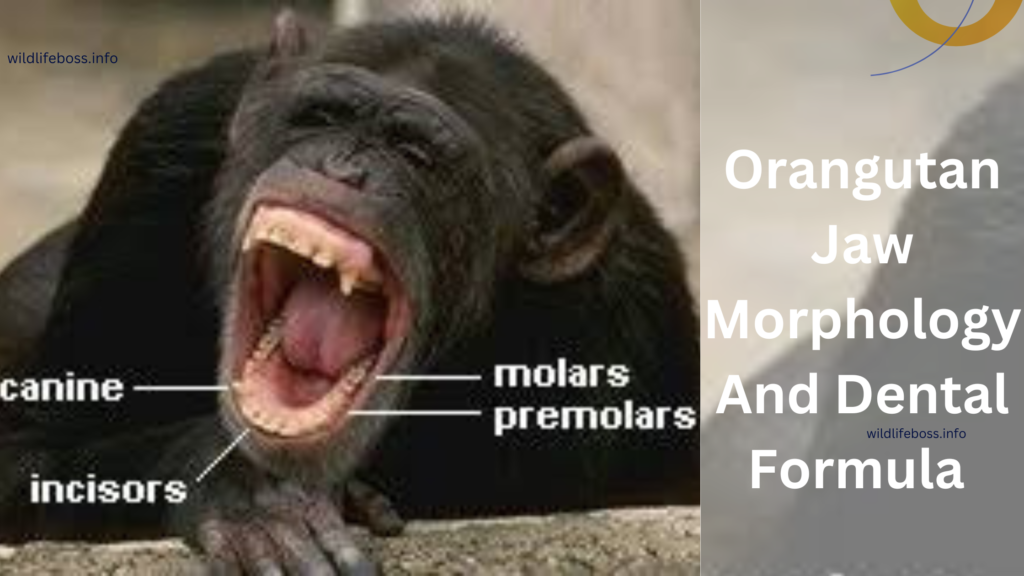
Orangutans and other primates share the same dental formula, yet they have very varied jaw morphologies.
Because of the great size of their teeth, orangutans have a rectangular jaw rather than a u-shaped one.
On the other hand, orangutans have 32 adult teeth, just like humans and other large primates. They have four incisors, two canines, four premolars, and six molars on both the upper and lower jaws.
With the exception of humans, all great apes, including orangutans, have a noticeable space between their canine teeth and second incisor. We refer to this as a diastema.
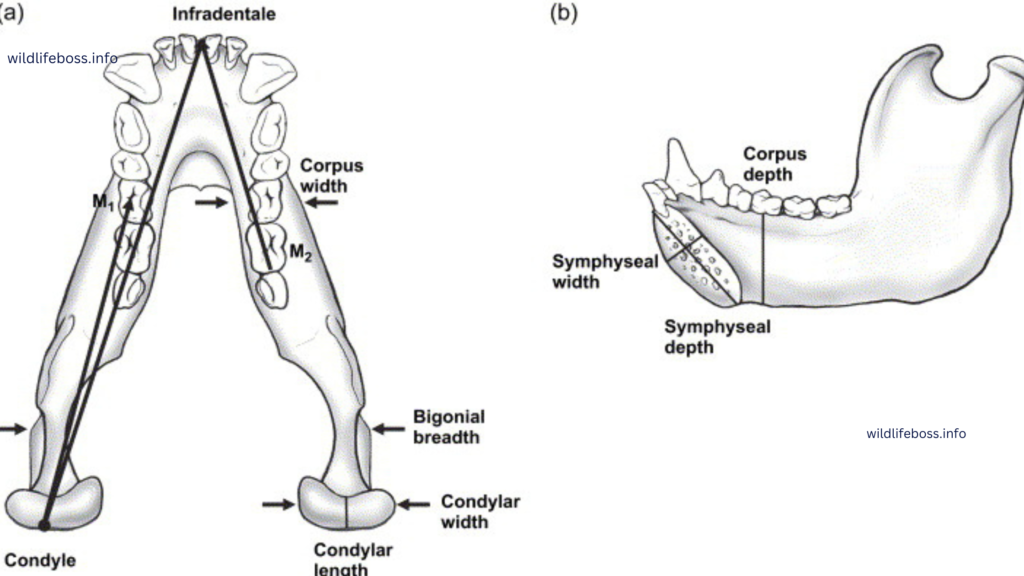
When Do Orangutans Develop Baby Teeth?
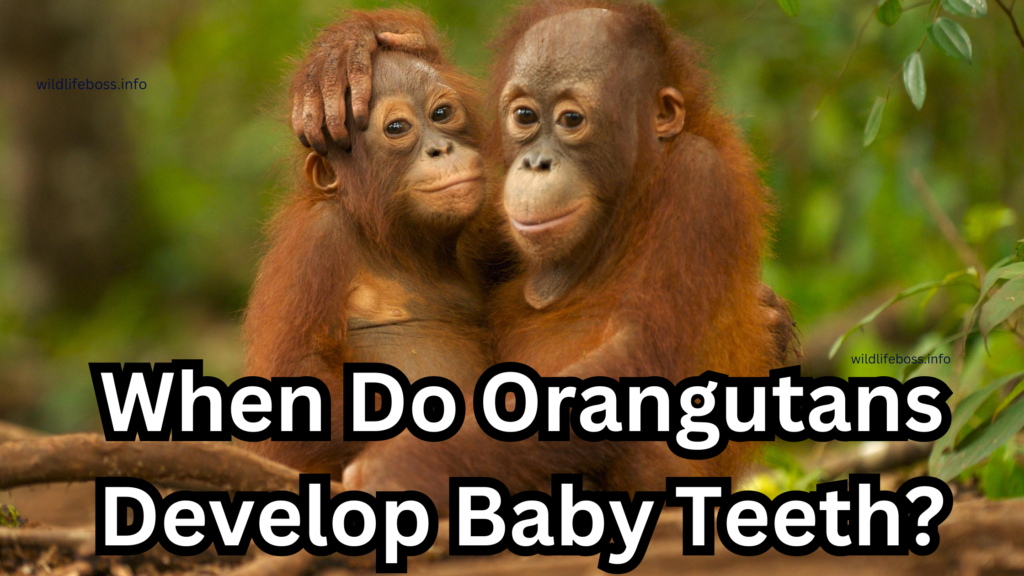
The eruption of baby teeth in orangutans occurs at a rate similar to that of human babies; the first teeth appear between 4.5 and 6.5 months of age, and all 20 appear by 12 months.
Although mothers breastfeed their babies until they are almost 7 years old, from 3 months old, they begin adding solid foods to their breastmilk.
The moms mash the food in their mouths before giving it to their kids because the babies don’t have teeth yet.
When the newborn orangutans erupt their first teeth and are able to use them for food, the consumption of solid foods accelerates between the ages of 12 and 18 months.
A baby orangutan teeth are capable of handling climbing and food-gathering on their own by the time they are 4 years old. They will remain with their mother until they are approximately 7 years old.
The mother may not become pregnant again till they go out on their own.
Permanent Teeth:
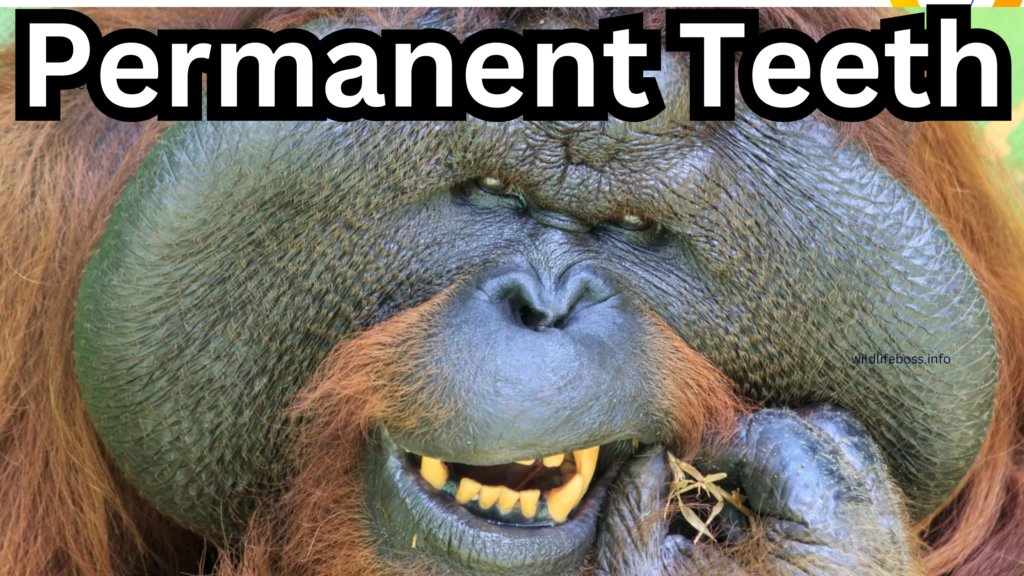
Orangutans begin to lose their baby teeth at the age of five, and this process continues until the last teeth erupt at the age of 12 or 15.
While most other primates obtain their permanent orangutan teeth considerably sooner, this is quite similar to how human teeth erupt.
It’s interesting to note that permanent premolars eventually replace baby premolars, but not before the permanent molars appear.
Particular Features of Orangutan Teeth
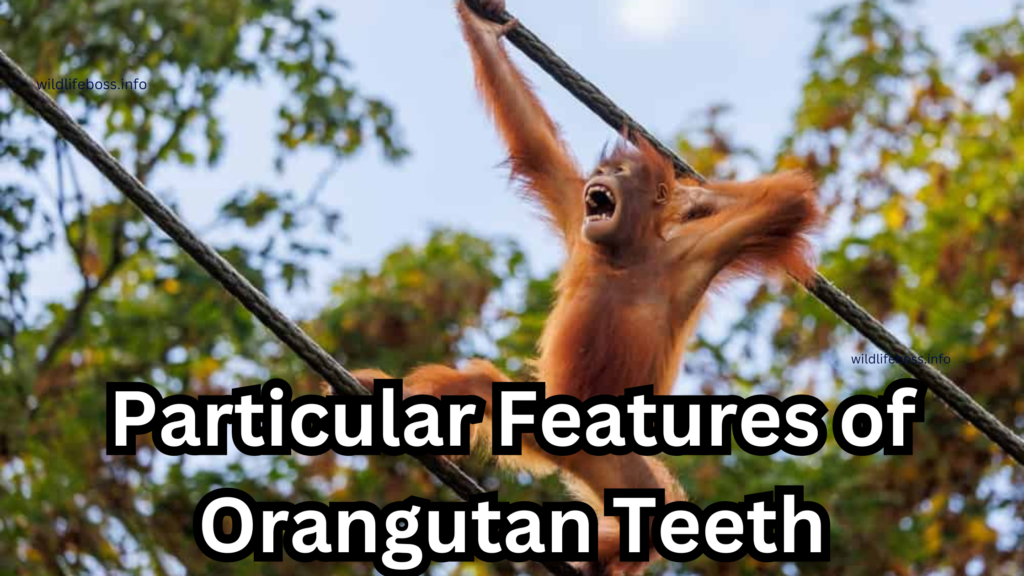
Comparing orangutan teeth to those of other primates, including chimpanzees, researchers have discovered that orangutan enamel is incredibly thick. On the molar basins, they likewise have deep ridges.
The thickness of the enamel varies based on the kind of molar, from 0.75 to 2.18 mm. The enamel on the teeth of men and women differs less, suggesting that both sexes eat similar diets.
The nutrition of orangutans in the wild is the reason why their teeth have evolved in this way. Their favorite foods are fruits, many of which have hard shells that need to be punctured with powerful orangutan teeth.
Furthermore, orangutans resort to eating seeds and bark, which call for extremely strong teeth, when fruits are scarce.
They are able to survive long enough to procreate because of the thick layer of enamel covering their teeth, which helps shield the teeth from damage that could impair their ability to consume during times of food shortage.
It’s interesting to note that the two distinct subspecies of orangutans differ from one another. The enamel of the Pongo abelii in Sumatra is thinner than that of the Pongo pygmaeus in Borneo.
For at least 10,000 years, the two populations have been isolated from one another.
Unlike their Bornean cousins, Sumatran orangutans do not have to eat tougher things like seeds and bark as often since they have more reliable sources of ripe fruit. Their dental enamel is consequently thinner.
Sea also: 8 Best Animals Like Elk(with photos)
What Is The Orangutan Bite Force?
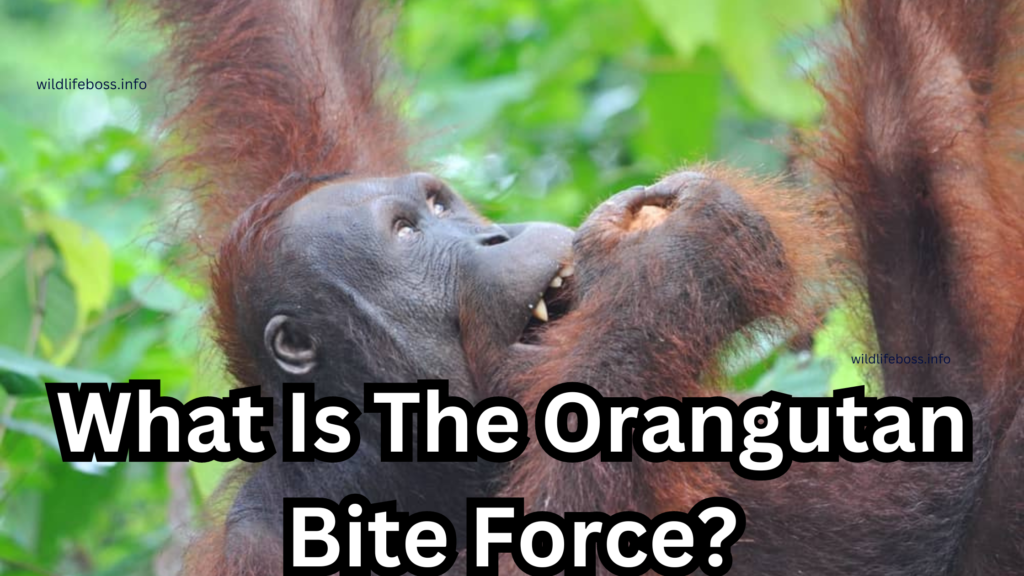
The bite force of an orangutan is 600 PSI. They are able to crack open seeds because of this.
For example, it has been reported that orangutans in Borneo consume up to 1,000 Mezzettia parviflora seeds every day. Given the low protein content of the fruit that makes up the majority of their diet, this is a crucial component of their diet.
They must break through the fruit’s protective outer shell in addition to the seeds. Gibbons and other primates are unable to get past the plant’s defenses.
They can crack open even the hardest nuts in their hunt for food since their jaw strength is about equal to the combined strength of six persons!.
Do Orangutans Bite Humans?
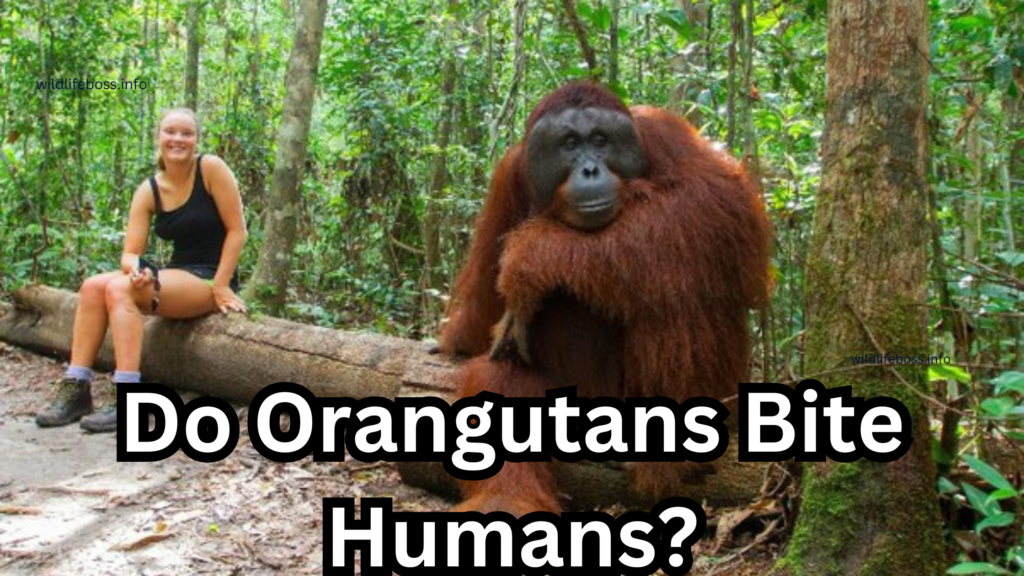
The number of human orangutan bite incidents is extremely low. There are hardly many direct interactions between people and the treetop-dwelling primates in the wild because they are so readily evaded.
Orangutans don’t even interact with other members of their own species very much!
Although females share nests with their young, they only have one child at a time and mate once the young leave the mother nest, usually when they are 7 years old.
91% of the time, according to studies, male orangutans live alone, which reduces their opportunities for violent behavior like fighting.
However, according to some research, up to 80% of male orangutans exhibit evidence of bite wounds from other males. Females have occasionally attacked other females as well.
But because they are so close to people, there have been rare cases of biting in zoos. Male orangutans have reportedly bit the fingers off of keepers.
In addition to the apparent physical discomfort of a severe bite wound, biting close relatives, like orangutans, increases the danger of contracting a virus or bacteria.
Because of this, orangutans kept in captivity typically follow the same immunization schedule as people.
Conclusion:
Close relatives of humans, orangutans are intriguing creatures that have many traits in common with ourselves, including comparable teeth. Orangutan teeth that erupt at a similar rate to humans, both in terms of quantity and variety.
In actuality, an orangutan’s dental treatment—whether provided in a zoo or a wildlife refuge—may resemble that of a human patient, down to the dentist’s chair!.
Frequently Ask Question(FAQs):
1:How Many Orangutan Teeth Do Have?
The deciduous orangutan teeth are 20 in a baby, but 32 in an adult. Molar teeth are not a part of baby teeth.
How Big Are Orangutan Teeth?
Orangutan teeth are large, can be seen whenever one displays them. Despite having the same number as humans, they are significantly greater in size.
Dog teeth measure roughly 1.7 inches in length. Premolars average somewhat less than an inch in length, and molars are even shorter than upper incisors, which range in length from 1.4 to 1.2 inches.
The premolars have three roots and are incredibly broad.

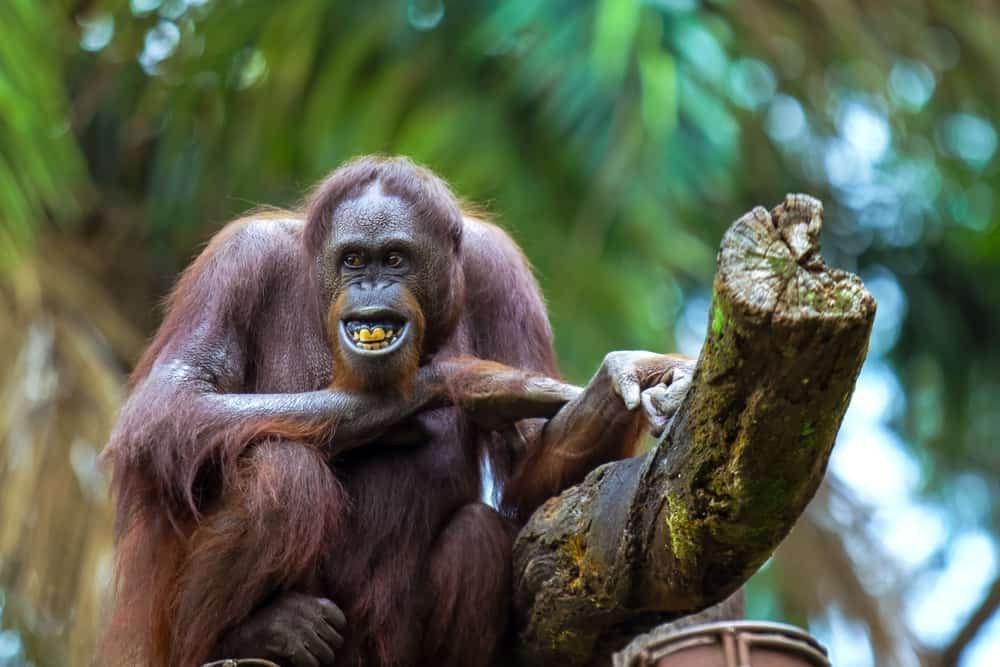
Pingback: Wolf Teeth: Explore Fascinating Facts & Formulas - Wildlifeboss.info